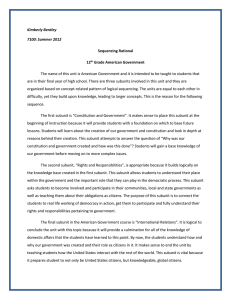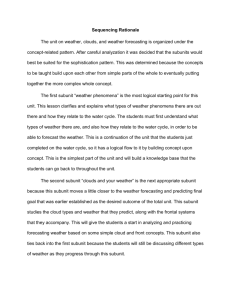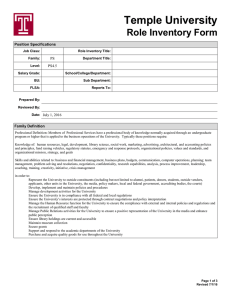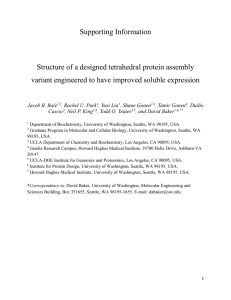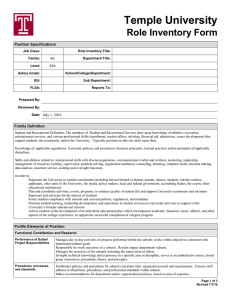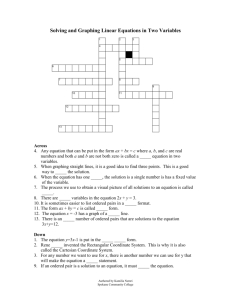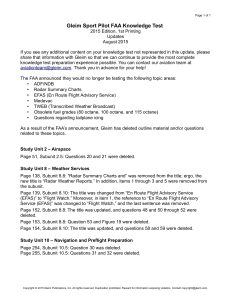sequence - IHMC Public Cmaps (3)
advertisement
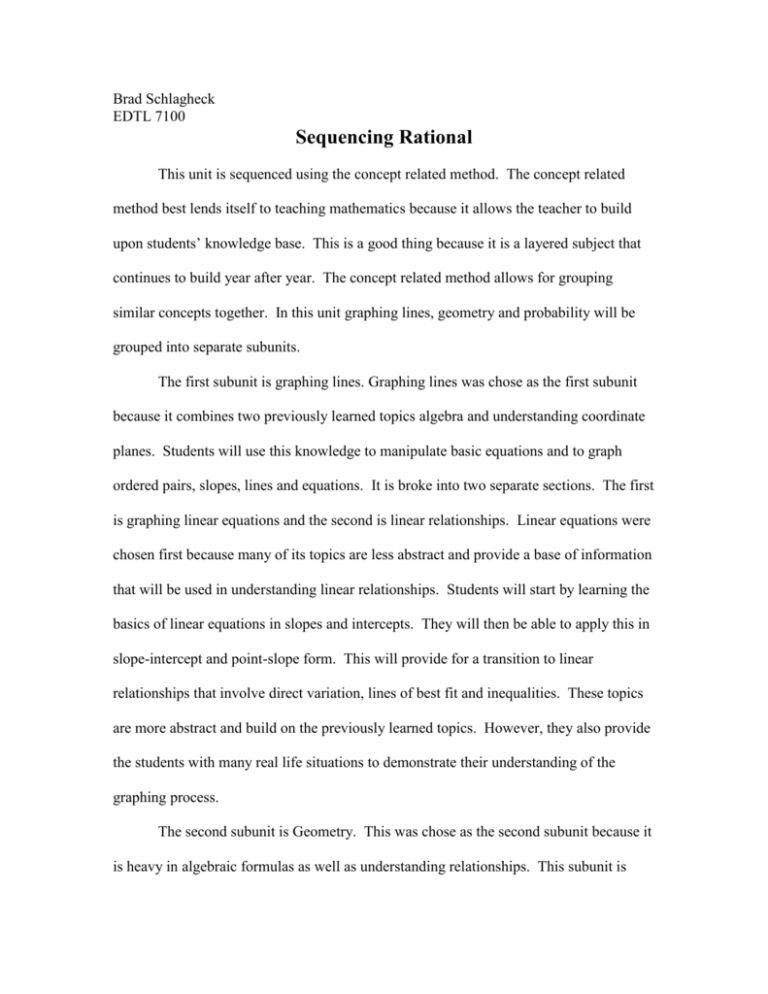
Brad Schlagheck EDTL 7100 Sequencing Rational This unit is sequenced using the concept related method. The concept related method best lends itself to teaching mathematics because it allows the teacher to build upon students’ knowledge base. This is a good thing because it is a layered subject that continues to build year after year. The concept related method allows for grouping similar concepts together. In this unit graphing lines, geometry and probability will be grouped into separate subunits. The first subunit is graphing lines. Graphing lines was chose as the first subunit because it combines two previously learned topics algebra and understanding coordinate planes. Students will use this knowledge to manipulate basic equations and to graph ordered pairs, slopes, lines and equations. It is broke into two separate sections. The first is graphing linear equations and the second is linear relationships. Linear equations were chosen first because many of its topics are less abstract and provide a base of information that will be used in understanding linear relationships. Students will start by learning the basics of linear equations in slopes and intercepts. They will then be able to apply this in slope-intercept and point-slope form. This will provide for a transition to linear relationships that involve direct variation, lines of best fit and inequalities. These topics are more abstract and build on the previously learned topics. However, they also provide the students with many real life situations to demonstrate their understanding of the graphing process. The second subunit is Geometry. This was chose as the second subunit because it is heavy in algebraic formulas as well as understanding relationships. This subunit is broken down into two parts, two-dimensional figures and three-dimensional figures. Two-dimensional figures will be covered first because many of its topics will be later used in three-dimensional figures. Three-dimensional figures will make up the bulk of this subunit because it is most fitting with eighth grade content standards and builds upon the topics and formulas of two-dimensional figures. Students will use their knowledge of nets and area to derive and manipulate formulas to find the surface area of threedimensional figures. Students can then relate this to the volume section of threedimensional figures. Probability is the final subunit to be taught. It is the last subunit because it is not as closely related in content as the other two. Probability is broken down to two sections experimental and theoretical. Experimental probability would be the first topic in this subunit because it is very literal and can be taught in a hands-on manor. Students can then use what they know to help them as we begin theoretical probability, which is more abstract. Students will learn about the differences between dependent and independent events. They will then apply this to help them make predications and decisions. Students will then be able explore odds and the relationships that exist between odds and probability. Finally the subunit will conclude with counting principles. Students will learn about permutations and combinations this will allow them to connect many real world situations to probability.
